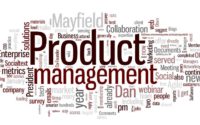Key Metrics for Product Managers to Track

It is really crucial for Product Managers to track the right metrics to measure how the product and business are tracking against the goals. In today’s data-driven world, Product Managers and business leaders have many tools at their disposal to track and measure business data. It is easy to get overwhelmed with data and it is even more critical to track the right metrics.
Overall Business Metrics
Here are some key business metrics that a Product Manager should track to give them a high-level view of product and business performance. These metrics would provide a good indication of the health of the overall business. These will also allow Product Managers to identify areas to dig into if these metrics are not moving in the right direction. So here they are.
Average Revenue Per User (ARPU)
Average Revenue Per User is a measure of average revenue you are making overall paying users your company has. These metrics give blended revenue over all your customers and all pricing/ products that they pay for. You would want to see your ARPU growing over time. A declining or flat ARPU could be an indication of problems in certain areas of business. For example, growing user count but declining ARPU could mean that customers are paying you less money. This could be due to customers signing up on your lower-priced products or features. So you might want to work on getting them to upsell them to other services.
ARPU = Total Revenue per user per month/ Total Paying users during that month
Customer Lifetime Value (CLV)
Customer lifetime value should be one of the core metrics for your product. Customer Lifetime Value indicates how much value a customer brings to your business over their life. It is calculated by a simple formula
CLV = Average Revenue per customer per month (ARPU) * Average no. of months users stay with you – Customer Acquisition Cost (CAC)
There are a few reasons, this is a crucial metric to track. It is a combination metric that gives an indication of a few different things. First, it tells you how profitable customers are during the time they use your service or product. You can grow CLV by either increasing ARPU from your customers or by keeping your customers longer. Second, it helps you determine how much money you can afford to spend on acquiring that customer to recover that money and make a profit over the lifetime of the customer. If your business is spending more money to acquire a customer than you make from them, then the business will eventually fail.
Churn
There is a simple rule of growing any business- acquire more users than you lose and keep these users for as long as you can. Typically, it is much harder and expensive to acquire new users than to retain existing users. Churn specifically tackles the problem of losing users. It is the rate at which a business loses its customers compared to what it started with.
User Churn = Users who canceled service during the period/ Users at the beginning of Period
So if your company started with 1 million users and you lost 10,000 during the month, your churn rate is 10,000/ 1M = 10%.
Note that users acquired during the period over which churn is calculated are not included in churn calculation but only the users who were paying customers at the beginning of the period are included.
Tracking and reducing churn is important to retain more users each month. Churn also affects the CLV of the user that I talked about earlier.
In addition to user churn that I described above, revenue churn is a related metric that indicates lost revenue, just like user churn indicates lost users.
Annual Recurring Revenue/ Monthly Recurring Revenue (ARR/ MRR)
Annual or Monthly Recurring Revenue is a good metric to measure for subscription or SAAS business. This metric tells you how much total recurring revenue your business is making on a monthly or annual basis. Product Managers would want to see this trend going up over time. If that trend goes down, that could mean your customers are paying you less every month. This, in turn, could be due to your business acquiring customers on lower-priced products. The ARR/ MRR could also decline if your old paying users are terminating service rapidly or new acquisitions have slowed down.
MRR is the total revenue from all customers in a month. Similarly, ARR is the total revenue from all customers in a year.
Customer/ Subscriber Acquisition Cost (CAC/ SAC)
CAC/ SAC is the average amount of money you are spending to acquire each user. As I mentioned above, you will determine your ideal CAC based on LTV analysis. Typically, you would want your LTV to be 2 to 3 times your CAC for a subscription business. That would mean that you are getting 2 to 3 times value from your new customers before they leave you.
These are high-level metrics for Product Managers to track overall business performance and health of the business. Your business goals and stage of business will also determine how much emphasis you put on each metric.
What metrics are you tracking for your product? How do you measure your key drivers and levers to steer your product and business in the right direction? I would love to hear your thoughts and comments.


